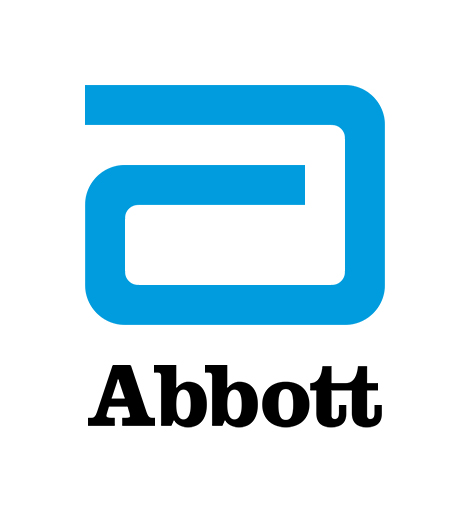Nurturing Healthier Living in a "Care Desert"
Abbott-sponsored doctors and remote care technology combine to expand specialized care to underserved locales.

Deserts possess many fine qualities.
Stunning sunsets.
Lawncare is minimal.
A rock collector's happy place.
"Care deserts" are something else altogether.
Far too-many pockets across the United States offer limited access to medical services. Whether those gaps result from simple geography or socio-economic conditions, the results are often the same: underserved communities receiving sub-optimal attention.
We are working to reach those communities by bringing people and physicians physically together, while also developing remote care technology that can join them virtually through NeuroSphere.
Let us explain.
"A Daunting Task"
Drs. Leigh Ann O’Banion and Misty Humphries are vascular surgeons who serve California's Central Valley, an 18,000 square mile swath of land known to some for its rich, rural beauty and to others for its paucity of medical specialists.
Determined to bring specialized cardiovascular care to areas with limited access to it, they began mapping out a method to, "improve the outcomes for our patients and communities," O’Banion said. "It turns out, that can be a pretty daunting task. We needed to reach out to a community that didn't know what they didn’t know."
In the coming weeks, their Abbott-sponsored team will roll out the first of several screening events. These are designed to not only share medical information, but also provide testing to determine if attendees have early signs of diabetes or related cardiovascular issues. While this initial event is scheduled to be focused on the south Central Valley, the ultimate goal is to advance health equity by delivering needed services to more underserved communities.
Partnering to Improve Health Outcomes
These sponsored screening events are designed to not only educate patients, but other physicians as well.
Continuing medical education (CME) will be offered for primary care doctors in the surrounding communities, focusing on the importance of testing for peripheral artery disease, carotid/aortic aneurisms and other cardiovascular conditions that might otherwise go undiagnosed and treated. They are offering not only in-person CME and patient education, but will also include online materials and other options, such as educational videos and pamphlets.
Bringing specialists to care deserts where they were not available before can make a lasting difference in many lives. This outreach will foster strong relationships so that, once they have attended a screening event, people can connect with appropriate specialists, a practice that will help establish a multi-disciplinary community.
"That way it's not just education, but forming relationships between primary doctors, cardiology, vascular, internal medicine, etcetera, so that we can jointly treat these patients," O'Banion said. "We want to identify risk factors early and get those people hooked up. If we can reach even a handful of people at each event who didn't know they had diabetes or high blood pressure, we will have reached our goal.
"Ultimately what we want is people to have access to healthcare."
The Remote Programming Connection
While outreach programs are effective at bringing communities together, Abbott's innovative technology can bring medical care directly to people. For numerous conditions, these tools can be used to diagnose and treat patients down the street or far away, bringing specialized healthcare to places it has never been.
Chronic pain and movement disorder patients, using Abbott neuromodulation devices, may require adjustments to treatment programs from their physicians. Abbott remote technology, such as NeuroSphere Virtual Clinic, used with our devices, helps connect caregivers with patients who, because of distance or travel limitations, would otherwise have trouble receiving this care.
Until Virtual Clinic was introduced, patients had to make appointments for office visits and then travel to locations that could be hundreds of miles away in certain cases, requiring multi-day trips for a short appointment. Patients with conditions that make it especially difficult to travel, such as Parkinson's, can now have virtual office visits as well as real-time adjustments made to their neuromodulation devices from anywhere with a Wi-Fi or cellular connection.*
In addition to the convenience of the care, the targeted treatment afforded by Virtual Clinic is adjustable to a patient’s specific use case. If a person is experiencing new or different types of pain, adjustments can still be made remotely. The same is true if more or less intensity is required, or a different stimulation program is introduced.
Other medical conditions, such as diabetes and cardiac issues, have Abbott remote programming applications. These continuing advancements set the stage for a time when neither distance, nor impairment, will limit specialized care options.
Returning Healthy Life to the "Deserts"
Care deserts, whether brought on by location, economics or any number of other factors, have traditionally had the same impact: Denying certain people the opportunity to receive the highest quality, most comprehensive healthcare available.while the Central Valley provides a lush, rural home to its residents, that means little if they are not well enough to live long, healthy lives
We are determined to decrease the impact of these deserts by bringing high-quality care and innovative remote technology to people and places that have never had it before.
The need is great and the areas often immense, but the first step in meeting this problem is to step up to it.
"These patients have a massive unmet need. We have a responsibility to serve as many as possible, irrespective of status or location. We can't forget them and just treat those who walk in our doors," O'Banion said. "We need to be more aware and make a commitment.
"If we each do a little, we can do a lot."
*Anywhere with a cellular or Wi-Fi connection and sufficiently charges patient controller.

